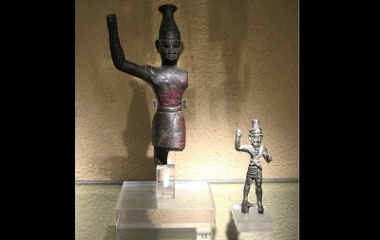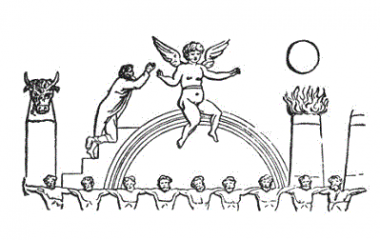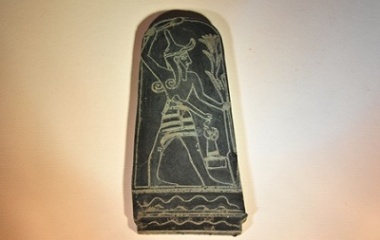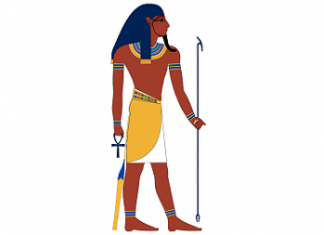- Pronunciation: Bail or bal
- Origin: Canaan, Phoenicia
- Role: Fertility, sun and storms
- Symbols: Lightning bolt, bull horns
- Parents: El and Asherah
Who Is Baal?
In ancient times, Canaan and Phoenicia were located in the area that now encompasses northern Israel, Syria, Jordan and Lebanon along the Mediterranean Sea coast. Baal was a fertility and earth god of the ancient cultures and was later exported to Egypt where he was worshipped as the storm god. The Semitic word Baal means lord or master, and the ancient people believed he was in charge of all of nature and humans. He was considered superior to his father, El, the chief of the deities.
There is archeological evidence of animal sacrifices to the god, and even human infant sacrifices. In addition, since it was believed that the sexual union of Baal and Anath (the goddess of love and war, and also Baal’s sister) or Asherah (his mother and mistress) led to fertility and good harvest, there was a practice of public ritualistic prostitution. A community female represented Asherah or Anath and a male priest usually represented Baal.
He also made appearances in the Hebrew bible.
Origin
Most of what is known about the deity comes from an archeological finding in 1929 in the location of the ancient city of Ugarit, in the northern part of Syria. In mythology, Canaan represented life and fertility and Mot was the god of death and sterility. The Canaanites believed that fertility came in cycles of seven years. Baal had a battle with Mot to determine whether there would be a drought and famine, or seven years of prosperous harvests. He also had to battle Yamm, the god of the sea, to win his position as the reigning king of the deities.
Family
The father of Baal was El, the first king of the gods; however, Baal was more powerful than his father. His mother Asherah was the chief female deity, and later was also considered his mistress. His sister – and another of his mistresses – was Anath, the goddess of love and war.
Religious Influence
According to the Old Testament, after the Israelites wandered in the desert for 40 years, they arrived in the fruitful land of Canaan where the prime deity was Baal. Before they entered the Promised Land, the Hebrew people were warned not to worship the pagan gods of Canaan. However, after wandering in the desert for all that time, they weren’t quite sure that their god was the right choice since the Canaanites were living it up on the fertile soil. Many split their allegiance and decided to worship both their god and Baal.
Their idol worship was punished when the Hebrew God sent word through the prophet Elijah that it was he who controlled the rain. The Hebrew god then sent a drought that lasted for more than three years.
Queen Jezebel of Phoenicia had 450 prophets of Baal as her court counselors. Elijah met 450 prophets of Baal at the base of Mount Carmel for the ultimate decision of which of the gods was in charge. All the Baal prophets called for lightning bolts as a sign from heaven, but nothing happened at all. When Elijah said a prayer to his God, lighting shot down from the sky.
Modern Influence
There were plans to erect reproductions of the 50-foot arched entrance of the Temple of Baal in Times Square in New York City, and Trafalgar Square in London during World Heritage Week in April 2016.
The original ancient temple in Palmyra, Syria was destroyed by ISIS in 2015. ISIS members regard some of the ancient temples and treasures as pre-Muslim idolatry, and have been known to sell the artifacts to fund their own cause.
Needless to say, there was quite a controversy surrounding the replicas, as they represented the location where ritualistic prostitution and human and animal sacrifices took place in honor of Baal. The project was ultimately cancelled in lieu of a replica of Palmyra’s Arch of Triumph, which stood in Trafalgar Square that week, as that arch has a less direct connection to the ancient pagan rituals.











Thank you for your interesting information on Baal. I am studying/preparing for my regular teaching on Sunday. I will be able to share your work with the ladies I teach. Thank you.